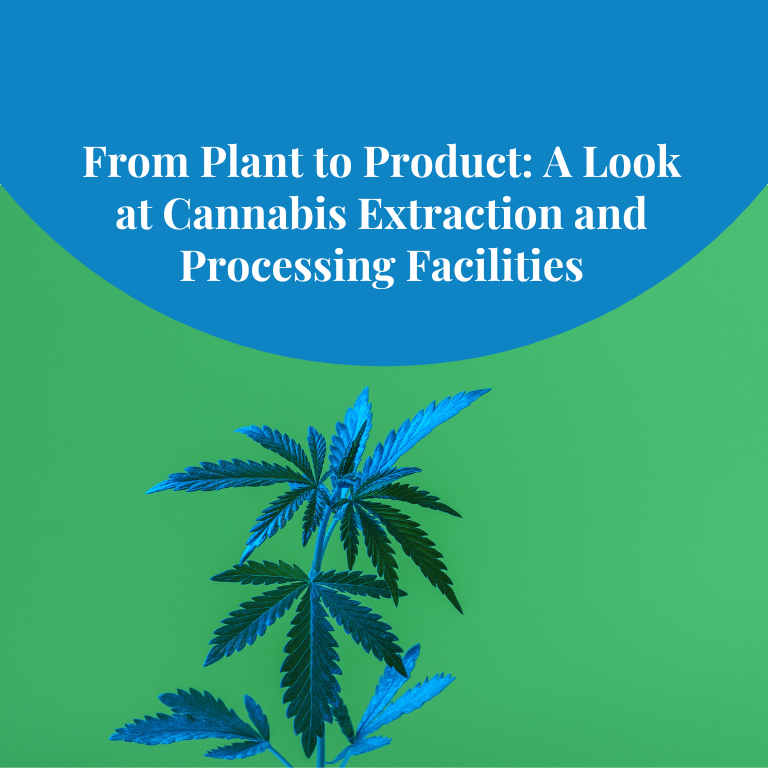Cannabis Processing: Innovations in Extraction Facilities

The cannabis industry has experienced exponential growth over the past decade, driven by increasing legalization and evolving consumer preferences. Central to this burgeoning industry are extraction and processing facilities, which play a crucial role in transforming raw cannabis plants into a diverse array of consumer products. This article delves into the intricacies of these facilities, exploring their functions, technologies, and the challenges they face.
Understanding Cannabis Extraction
Cannabis extraction is the process of isolating cannabinoids, terpenes, and other beneficial compounds from the raw plant material. This step is essential for producing various cannabis products, including oils, tinctures, edibles, and concentrates. The extraction process not only affects the potency and purity of the final product but also influences its flavor, aroma, and overall quality.
Types of Extraction Methods
Solvent-Based Extraction: This method uses solvents like ethanol, butane, or propane to dissolve cannabinoids and terpenes from the plant material. After extraction, the solvent is evaporated, leaving behind a concentrated extract. While effective, this method requires careful handling to ensure safety and avoid residual solvents in the final product.
CO2 Extraction: Supercritical CO2 extraction involves using carbon dioxide under high pressure and temperature to extract cannabinoids and terpenes. This method is favored for its efficiency and ability to produce high-purity extracts without residual solvents. CO2 extraction is versatile and can be adjusted to target specific compounds.
Hydrocarbon Extraction: Utilizing hydrocarbons such as butane or propane, this method is known for its ability to extract high-quality concentrates like shatter and wax. However, it requires stringent safety measures due to the flammable nature of the solvents used.
Rosin Pressing: A solvent-free method that uses heat and pressure to extract cannabinoids and terpenes. This technique is appreciated for its simplicity and purity, making it a popular choice for producing high-quality extracts with minimal processing.
The Extraction Facility Setup
A cannabis extraction facility is designed to support various extraction methods and ensure that the final products meet industry standards for safety and quality. Key components of these facilities include:
Extraction Equipment: Depending on the chosen extraction method, facilities are equipped with specialized machinery, such as CO2 extractors, solvent recovery systems, or rosin presses. Each piece of equipment is essential for the efficient and safe extraction of cannabinoids and terpenes.
Clean Rooms: To maintain product purity and prevent contamination, extraction facilities often have clean rooms with controlled environments. These rooms are designed to minimize dust, bacteria, and other contaminants that could affect the quality of the final product.
Quality Control Labs: Facilities include testing laboratories where extracted products undergo rigorous quality control. Tests are conducted to measure potency, purity, and the presence of residual solvents or contaminants. Ensuring product safety and consistency is a top priority.
Storage and Handling Areas: Proper storage and handling are crucial to preserving the quality of extracted products. Facilities are equipped with climate-controlled storage areas to maintain the stability and efficacy of cannabinoids and terpenes.
Processing the Extracts
After extraction, the raw extracts undergo further processing to refine their composition and prepare them for consumer products. Key processing steps include:
Winterization: This process removes fats, lipids, and waxes from the extract to improve its clarity and purity. The extract is mixed with alcohol and cooled to precipitate unwanted compounds, which are then filtered out.
Distillation: Distillation separates cannabinoids and terpenes based on their boiling points. This step enhances the purity of the extract and allows for the creation of specific products, such as THC or CBD distillates. Distillation can be performed using short-path or fractional distillation techniques.
Decarboxylation: This chemical reaction converts non-psychoactive cannabinoids (e.g., THCA) into their active forms (e.g., THC) through heating. Decarboxylation is essential for producing psychoactive products and ensuring that cannabinoids are bioavailable when consumed.
Blending and Formulation: Extracts are blended with carriers or other ingredients to create final consumer products. This step involves careful formulation to achieve the desired potency, flavor, and effects.
Challenges in Extraction and Processing
Cannabis extraction and processing facilities face several challenges that impact their efficiency and product quality:
Regulatory Compliance: Facilities must adhere to stringent regulations and standards set by state and federal authorities. Compliance includes obtaining licenses, following Good Manufacturing Practices (GMP), and ensuring product safety through rigorous testing.
Safety Concerns: The use of solvents, high pressures, and temperatures in extraction processes presents safety risks. Facilities must implement strict safety protocols, including proper ventilation, training for staff, and emergency response plans.
Quality Control: Maintaining consistent product quality is challenging due to the variability in raw plant material. Facilities must employ advanced quality control measures to ensure that each batch meets the required standards for potency, purity, and safety.
Environmental Impact: Extraction processes can generate waste and consume significant energy. Facilities are increasingly adopting sustainable practices, such as solvent recycling and waste management, to minimize their environmental footprint.
The Future of Cannabis Extraction and Processing
As the cannabis industry continues to evolve, so too do the technologies and practices in extraction and processing facilities. Innovations are driving improvements in efficiency, safety, and product quality:
Advanced Technologies: Emerging technologies, such as precision extraction and automation, are enhancing the efficiency and consistency of extraction processes. These advancements aim to reduce labor costs, improve yield, and ensure precise control over product formulation.
Sustainability Initiatives: The industry is increasingly focusing on sustainability, with facilities adopting greener practices and exploring eco-friendly extraction methods. Efforts include reducing energy consumption, minimizing waste, and implementing recycling programs.
Product Diversification: As consumer preferences shift, facilities are developing new and innovative products, such as infused beverages, topicals, and transdermal patches. This diversification requires adaptability and ongoing research to meet market demands.
Cannabis extraction and processing facilities are integral to the cannabis industry, transforming raw plant material into high-quality consumer products. As the industry grows, these facilities face challenges related to regulation, safety, and quality control. However, advancements in technology and sustainability are paving the way for a more efficient and responsible cannabis production process. Understanding the role and intricacies of extraction and processing facilities is crucial for appreciating the journey of cannabis from plant to product.











